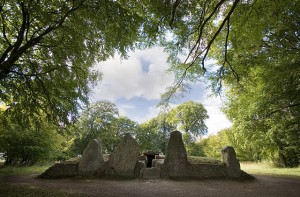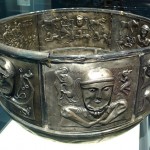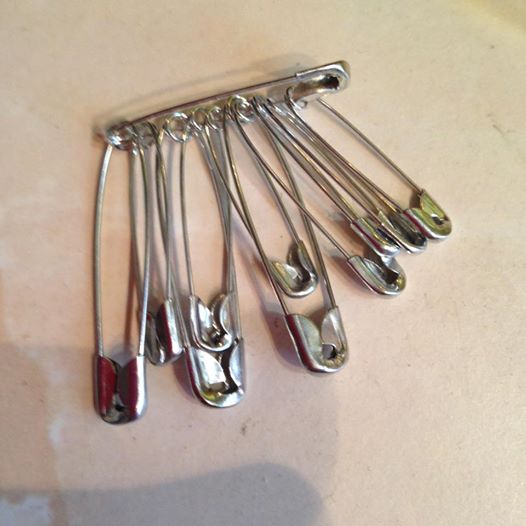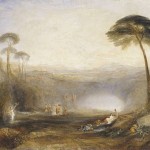I have always liked the description of Paganism as nature religion (however inaccurate and unhelpful that may be). The idea of being connected to Nature was one of the things that drew me towards Paganism. I also really liked the old gods, but woods, mountains, the sea, chalk hills, ancient trackways, burial mounds, stone circles, and liminal places have always attracted me. I think I first tried talking to trees when I was about 12 years old. I get withdrawal symptoms if I don’t get out into the countryside regularly. So I also feel the urge to converse with the spirits of the land.

Land spirits and deities
The Otherworld does not consist only of deities. There are also land wights, landvaettir, genii loci, land spirits, and spirits of the hearth and home.
If you want to be in relationship with deities, it is a good idea to talk to your local land spirits, ancestors, and household spirits. Deities exist in the context of other spirits.
As this article by Laura Patsouris points out:
A lot of people feel pulled into Deity work right away, when the first thing they should be focusing on is developing a strong relationship with their ancestors and with the spirits of the land on which they live. … developing strong relationships with both your ancestral dead and with your local land spirits is excellent training for working with Deities down the line. … Honoring the land spirits is something we can do to begin bringing ourselves back into balance with the natural world. As a species we have much to atone for and starting to treat the earth as powerful and sentient is a good start.
Start by identifying the sacred places in your local area, such as hilltops, hollows, wells and springs, crossroads, and other liminal places. Then go and spend time in those places, and feel the energies and presences there. If you leave offerings, it is best to leave inconspicuous ones that don’t harm the environment or the animals and birds that live there. Rather than tying ribbons to trees, tie a strand of your hair to a branch instead. Rather than leaving flowers or crystals, make a temporary mandala of leaves, pebbles, pine-cones, twigs, and/or berries that you find on the site. Even better, clear up any litter on the site.
Land spirits in North America
Many people in North America are worried that if they approach the land spirits, it will be cultural appropriation. But you need to devise your own rituals for approaching them, not appropriate the rituals of First Nations people, which probably won’t fit in a Pagan context anyway.
Honor the spirits of the land. Speak to them: address them respectfully and introduce yourself. More importantly, listen for them. Make offerings, but be wary of assuming traditional Native American offerings like tobacco and cornmeal are required or even proper. Honor them in your way. Not sure what that is? Ask them. When it doubt, clean water is always appropriate.
When I made contact with the land spirits of Ontario in a ritual, they seemed really keen to talk to me, so I feel that trying to enter into relationship with them is a good thing. As other authors have emphasised, you just need to be respectful and not try to use Native American terminology or offerings, unless you are specifically invited to do so by Native Americans themselves.
Land spirits in Europe
Making contact with land spirits in Britain and Europe is even easier (because these are not colonised lands, unless you live in the northern regions of Scandinavia) – just go into the landscape and listen. Finding a sit-spot and going there regularly is a very good way of connecting with a particular place. When you go to a sacred place in the landscape, always approach it with respect and ask the local spirits for permission to be there, especially if you are planning a ritual. What I do is pause at the entrance to the site, ask if it is okay, and wait for a sense that it is alright to proceed.
One of the finest books on Paganism I have ever read is The Art of Conversation with the Genius Loci by Barry Patterson. It explains in some depth how to see things from a non-human perspective, how to relate to your local landscape, and how to make connections with the land and the spirits that dwell there. It is so good that I have said to people, “if you only read one book about Paganism, make it this one”.
Each landscape (especially in Britain with its very varied geology) is unique, and takes some getting to know. There is the geology, the flora, the fauna, the history, the folklore, and the archaeology (a palimpsest of human occupation and land-use). Take your time to get to know all of these, and to connect with all of it.
Building and repairing relationships with land spirits entails doing something to repair our relationship with nature as a whole. This will mean different things for different people. Personally, I have felt much more attuned to Nature since I stopped owning a car. Your approach may be different, and I don’t presume to dictate what it should be.
Here is a poem I wrote about Danehill Barrow in Cambridgeshire, England, many years ago.
Danehill Barrow
On the hill, gazing at furrows
ploughed in the chocolate earth
I dredged the ditch of history.
Beneath my feet lay the bones
of forgotten ancestors
dreaming the land into being.
Bare-limbed trees shook in the gale,
singing an ancient song
in a forgotten language.
The furrows of earth, like thighs
rose and fell, breathing, in the sun,
waiting to enclose the seed.
I lay on the mound, in the grass,
dreaming with the ancestors,
at one with the land.
















